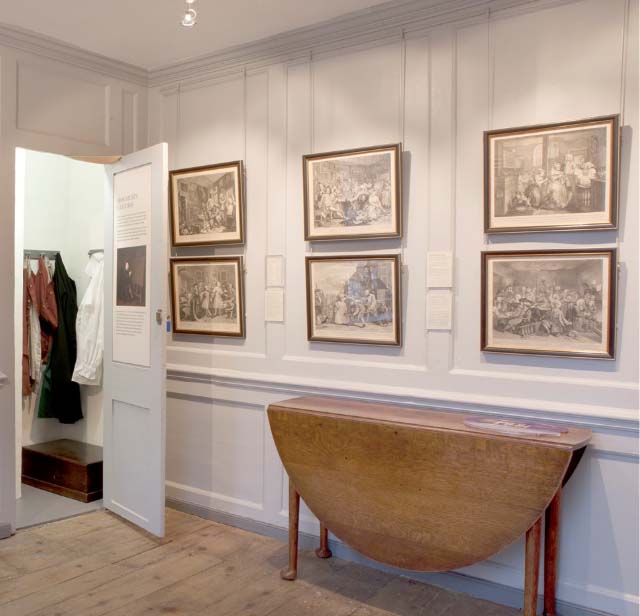Hogarth's House
Hogarth's House, built around 1700, was the country home of the great painter, engraver and satirist William Hogarth (1697-1764) from 1749 until his death. Hogarth's town house, in what is now Leicester Square, was demolished in 1870. Fortunately his rural retreat in Chiswick - where he lived with his wife, mother-in-law and sister - has survived, and is now an oasis in busy West London.
Set behind old brick walls with a delightful garden containing Hogarth's mulberry tree – the Hogarth’s are said to have made mulberry pies for the Foundling children who stayed with them - it retains a charm of its own where visitors can find out more about the 'Father of English Painting'.
The house was first opened to the public as a museum to Hogarth in 1904. As well as telling the story of Hogarth's life, Hogarth’s House contains an unrivalled collection of his prints on permanent display, including 'Harlot's Progress', 'Rake's Progress', 'Marriage a la Mode', 'Gin Lane' and 'Beer Street'. It also hosts a rolling program of exhibitions covering topics from art to history to local interest.
In 2014 the William Hogarth Trust commissioned a special exhibition to be held at the museum to mark the 250th anniversary of Hogarth's death. This exhibition featured artwork submissions from over fifty artists and celebrities in tribute to Hogarth including works by Quentin Blake, Harry Hill, Jacqueline Wilson, Cath Kidston, Peter Blake and Joanna Lumley.
After receiving a Heritage Lottery Fund grant the House re-opened its doors to the public on November 8 2011 after three years of restoration. The history of the House has been meticulously researched and its story is now told in display panels throughout. Personal items from the Hogarth family made a welcome return to the House after an absence of over 200 years.
These include a little portable chest in which Hogarth kept his colours, his palette, his punchbowl and a mourning ring commemorating his wife, Jane. Visitors will discover more about the ladies of the Hogarth household – not only Jane but her mother, Lady Thornhill, her cousin, Mary Lewis (to whom she left the House), Hogarth’s sister, Anne and family friend, Julian Bere, a wealthy spinster – who all lived together in Leicester Fields and in this house in Chiswick.
New research also made it possible to create displays which tell the story of others who lived there, both before and after the Hogarths. They have turned out to be interesting in their own right and help provide a complete story of Hogarth’s House and its history.

